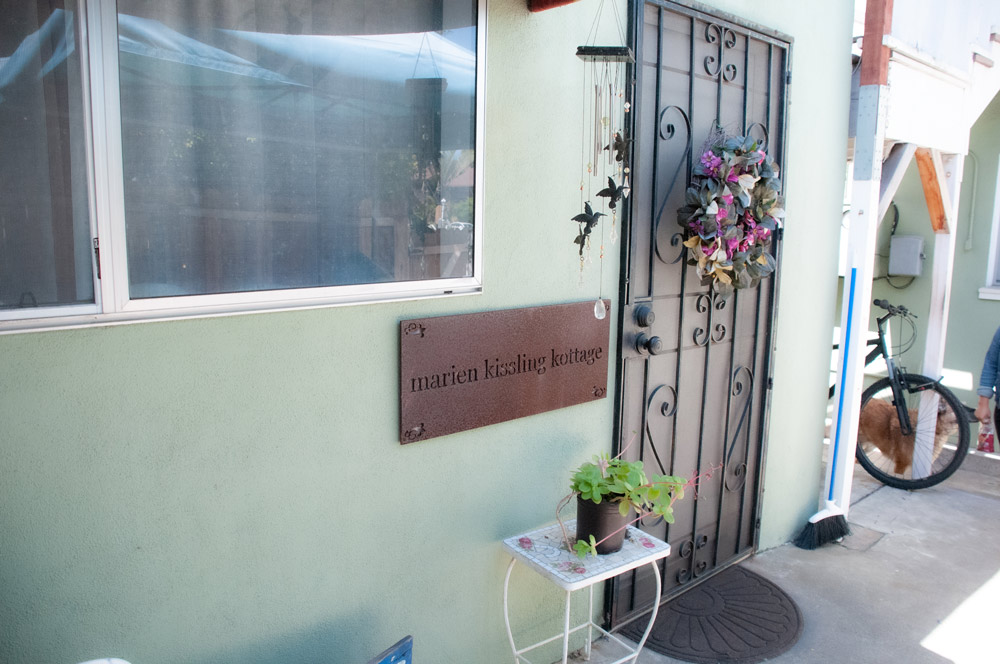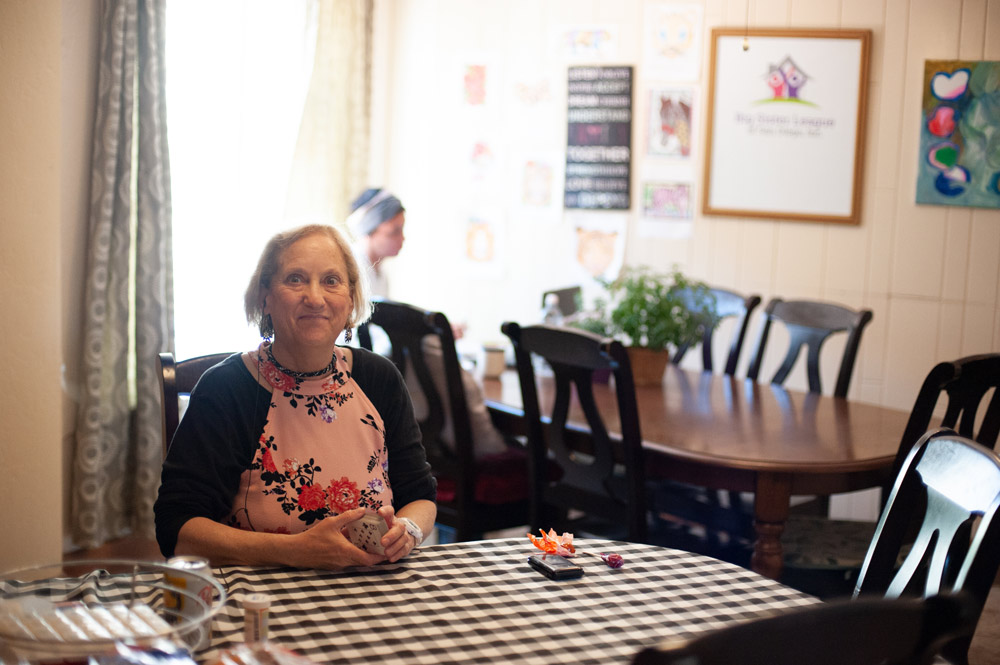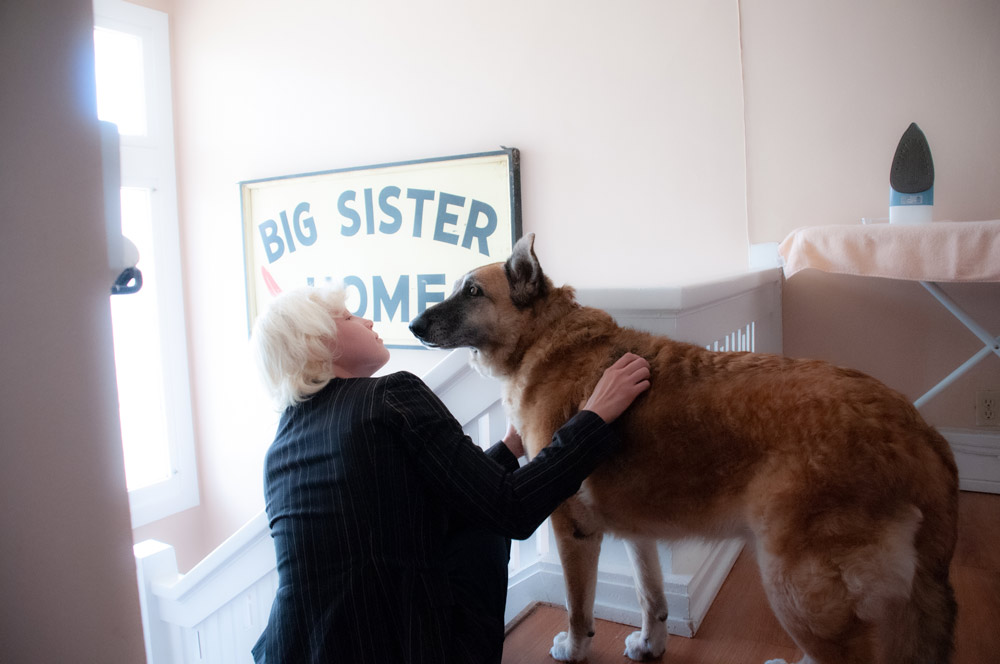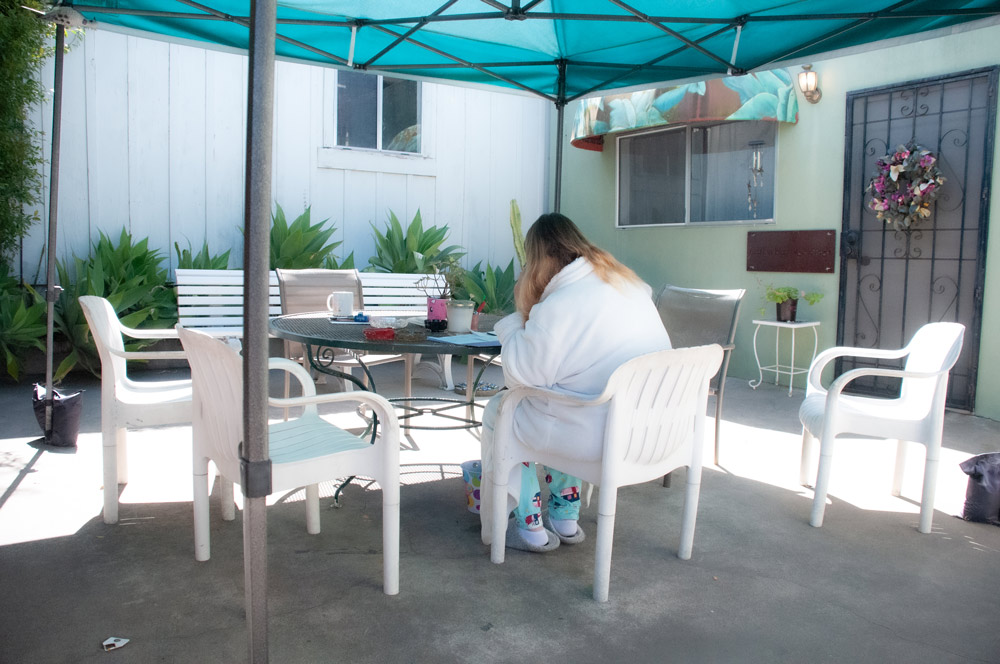The plight of homeless women fueled the founding of the Sister League during World War II. Our mission has continued to support San Diego women in need with affordable housing and support services.
1942 was war time. Women were drawn to San Diego to visit or bid farewell to their husbands or sweethearts, and to work in the defense industry. They often arrived to find that the men were already deployed, leaving them without secure housing and little or no funds. Pursuant to the local law at the time, unescorted women found on the streets past the 10 p.m. curfew were booked into jail as vagrants.
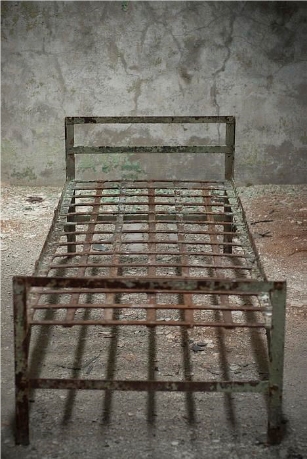
San Diego had a beautiful new jail, but the women were sleeping with only a blanket between them and the iron bars of the sleeping shelves in their cells. The women who slept in the jail became known as “waffle women” because of the pattern left on their backs by the bars.
The plight of the “waffle women” came to the attention of the League of Women Voters, which was fortunate to have Mrs. Anderson (“Fannie”) Woods among its members. Mrs. Woods and her husband moved from New York to San Diego in the 1930s for the benefit of their health.
According to an article written by Irene M. Clark for publication in the San Diego Union in May 1948, prior to her retirement and move to San Diego, Mrs. Woods “had been one of the leading crusaders for the betterment of conditions for women, girls and children.” Mrs. Woods was acquainted with New York City Mayor La Guardia and was a member of the Court Committee of the Brooklyn Bureau of Charities, the President of the Brooklyn Welcome Home for Girls, and had arranged a series of education, civic and welfare radio broadcasts.
In 1942, Mrs. Woods was appointed by the San Diego League of Women Voters to look into the conditions the women were subjected to while in the San Diego jail. Because of her years of involvement with these types of issues, Mrs. Woods knew what was needed in San Diego. She published a plea in the San Diego Union for a meeting of church and club women to discuss establishing a temporary shelter for women.
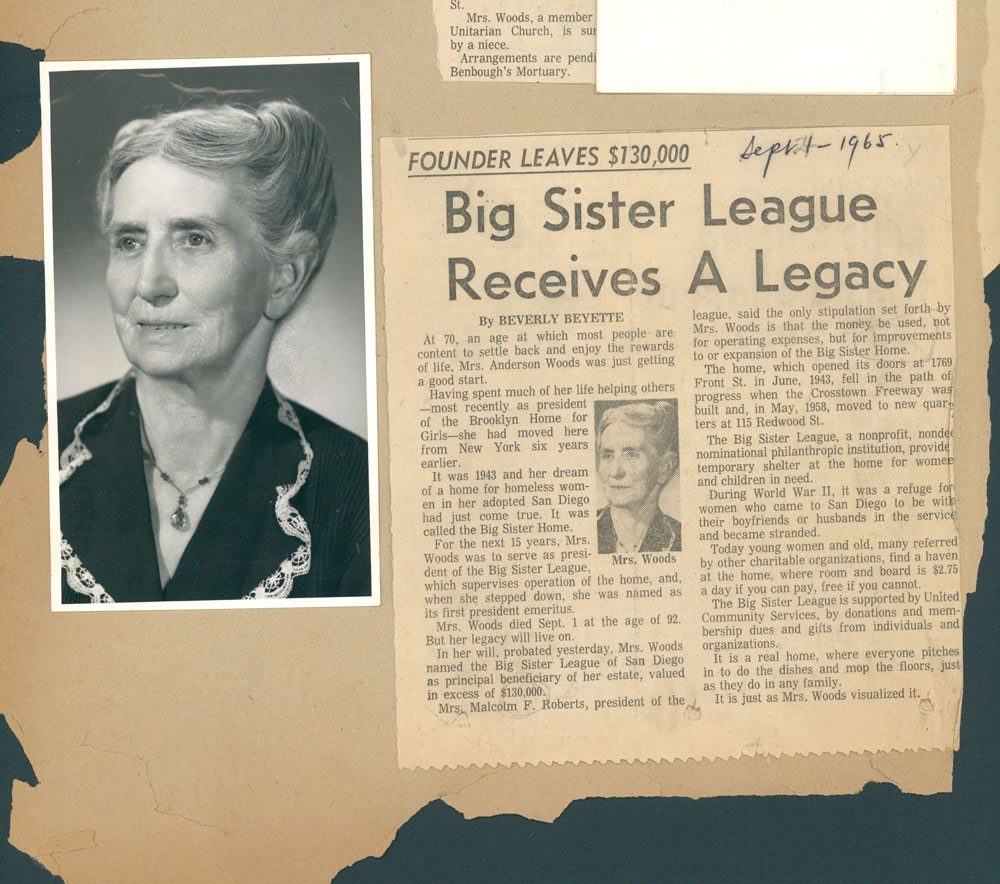
In an article published in the San Diego Union on June 17, 1943, columnist Irene Clark wrote of another woman who inspired the fledgling Big Sister League of San Diego – Minnie Barton, the first female police officer in Los Angeles and founder and director of the Big Sister League of Los Angeles, which at that time operated three homes that were founded in 1917 “to help women face the struggle of life.”
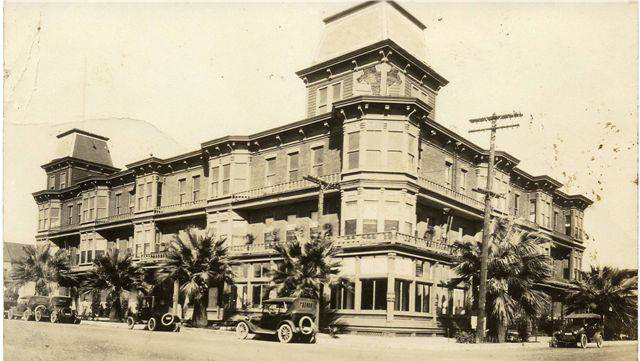
Mrs. Barton came to San Diego to meet with the concerned women to explain how her project prospered despite overwhelming obstacles. Mrs. Barton’s talk provided inspiration to the San Diego women and in response, the San Diego Soroptimists secured and funded a room at the Palms Hotel to house “respectable” girls and women who had arrived in San Diego without funds and were in need of temporary shelter, food and financial aid. Mrs. Woods, along with other civic-minded women and community leaders, worked to enlarge the scope of work started by the Soroptimists, and thus began their search for a residence to establish a Big Sister League home.
On December 19, 1942, the San Diego Union reported that the Big Sister League of San Diego (now named “Sister League of San Diego”) had filed for incorporation “…preparatory to undertaking establishment of a permanent home and rehabilitation center for transient women.” By then, 350 people were involved in the effort with a substantial treasury to be used for a home. The San Diego City Council showed its support by promising the League almost rent-free use of a city-owned building when it became available in the following spring of 1943.

Shortly thereafter, the City Council authorized the use of a home at 1769 Front Street as the League’s first home.
The League immediately began renovating and furnishing the residence. While looking into the history of the home on Front Street, Mrs. Woods unearthed information that “City Father” Alonzo Horton was the original owner. To commemorate this historic finding, and to honor his memory, members of the Horton family donated three oil paintings to be hung in the living room of the 3-story house built in 1886.
The home had been utilized as a rooming house for low income women, and in various newspaper articles the home was described as “battered, run-down, neglected, shabby and abused.” The restoration of the home presented a challenge to the League’s original members, but civic groups gathered donations and donated appliances and furniture. Each room was adopted by a church, civic club or group to be furnished with the essentials.
On June 16, 1943, the public was invited to an open house and unveiling of a clean, freshly painted and rejuvenated home. The San Diego Union reported that “Mrs. Anderson Woods, Founder of the Big Sister League of San Diego, stood on the landing of the noble old staircase to welcome guests and present some of the distinguished folk who had had a part in it.” Mrs. Barton was also present at the celebration, and it was noted that she was thrilled to see what the women of San Diego had done. “It is a joy to see it so beautiful and to know, as I do, how much it is needed here,” said Barton.
By the time the home officially opened, the League already had seven young women in residence.
The House Matron reported, “Each girl, as she entered the door, caught her breath and then sighed happily: ‘Why, it’s a real home. It’s beautiful.’”
Sister League continued its service to the women of San Diego, and Mrs. Woods remained President. The League became a member of the “Community Chest” in October 1943, and potential residents were referred by the Red Cross, Travelers Aid, Y.W.C.A., Salvation Army, and other social services agencies. The League home gained a reputation as having a fine atmosphere where residents were treated kindly. Local newspapers recounted several instances in which the League came to the aid of women in need, especially wives and families of servicemen.
During the early years, rent paid to the City of San Diego was $5 per year. It was reportedly kept low because of the City Father’s appreciation of the League’s dedication to serving the community. In April 1954, the San Diego City Council deeded the Front Street property over to the League at a tea hosted by Navy Chaplains’ Wives. The residence was eventually demolished to make room for the Crosstown Freeway, better known as the I-5.
On May 21, 1958, Sister League opened the Redwood House in Bankers Hill. Deeded by the City of San Diego, the house had five dormitory-style rooms on its second floor. The rooms were sponsored and maintained by various groups who kept up the maintenance of the rooms as needed (paint, repair, new sheets and bedding, etc.). The main floor contained a large kitchen, a family type dining room where all residents dined together, a large living room and the assistant directors room. The garage had been converted into a community room which provided laundry facilities, a refrigerator for snacks, a television, books, games and more.
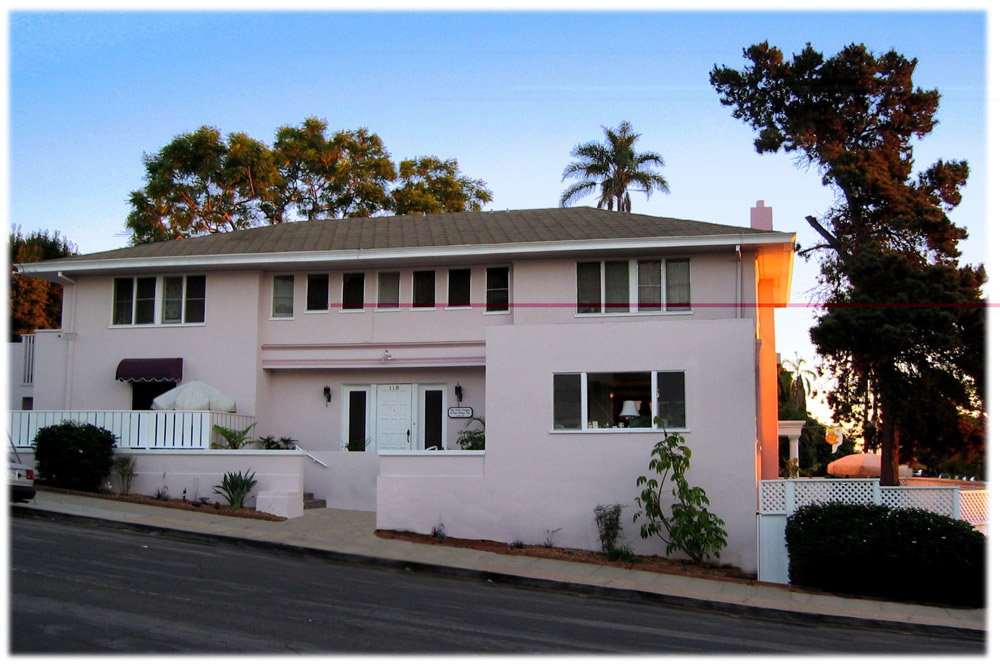
In 1997, Sister League acquired its second residence at 3360 Fourth Avenue under the guidance of Executive Director Mary McAfee. It was McAfee’s vision that took the agency to its next level, as she was a strong advocate of increasing mental health support for the residents. The Fourth Avenue House provided long-term housing for up to 15 adult women desiring a more structured environment.
In 2022, after eight decades of serving women in need, Big Sister League of San Diego changed its name to “Sister League of San Diego.”
“As the organization approached 80 years of service to underserved women, we decided that a more empowering name and inspiring logo to reflect a transformation was needed,” said Board President Jessica Aminoff. “The new logo captures our mission for the residents to recover, rise and flourish towards a life of independence.”
Per Executive Director Nuria-Haro Lopez, the demographics of the women served changed since the non-profit began in 1942, and the new name and logo reflect the agency’s support of its residents as equals. “We’re very excited about the rebranding, as we see our residences as sisters, not mentees, as the word ‘big’ may imply,” Haro-Lopez said.
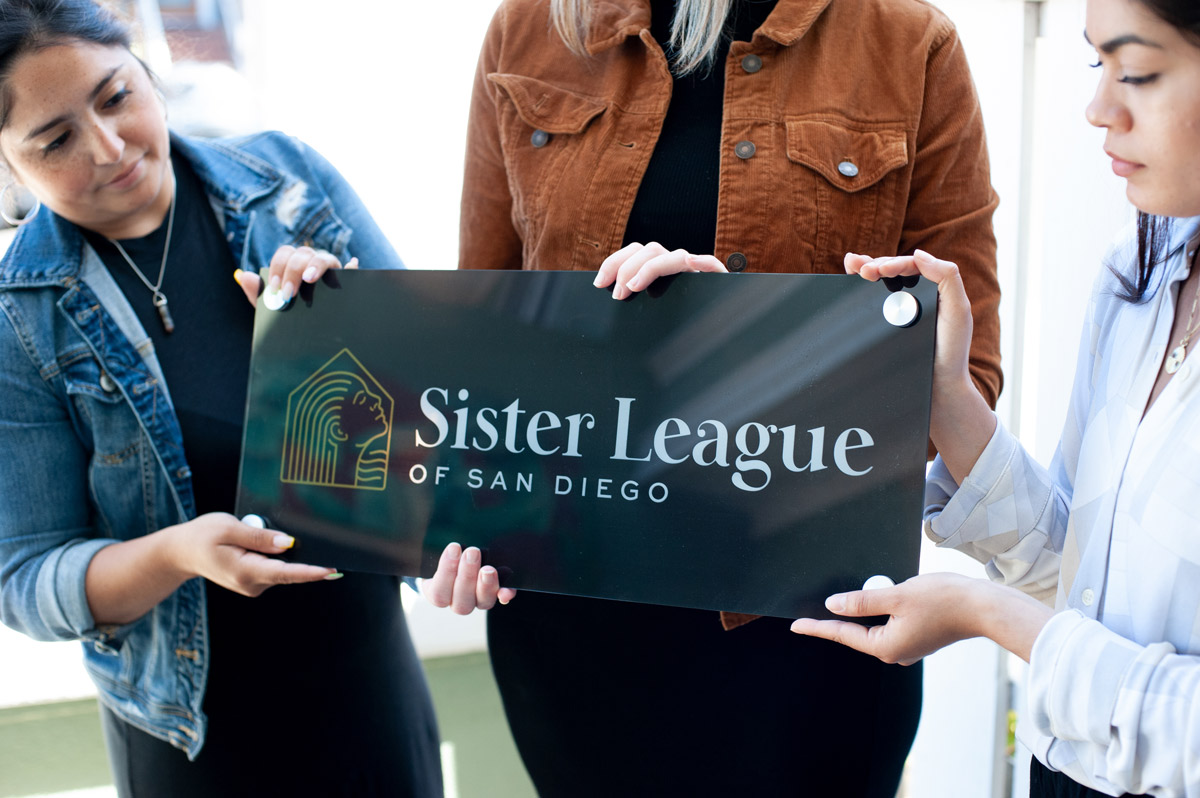
Today, Sister League continues to provide safe housing and supportive day programming to adult women affected by mental health issues, homelessness, trauma and domestic abuse. Sister League staff manages two 15-bed residences in the Banker’s Hill neighborhood of San Diego, which together accommodates 30 residents.

